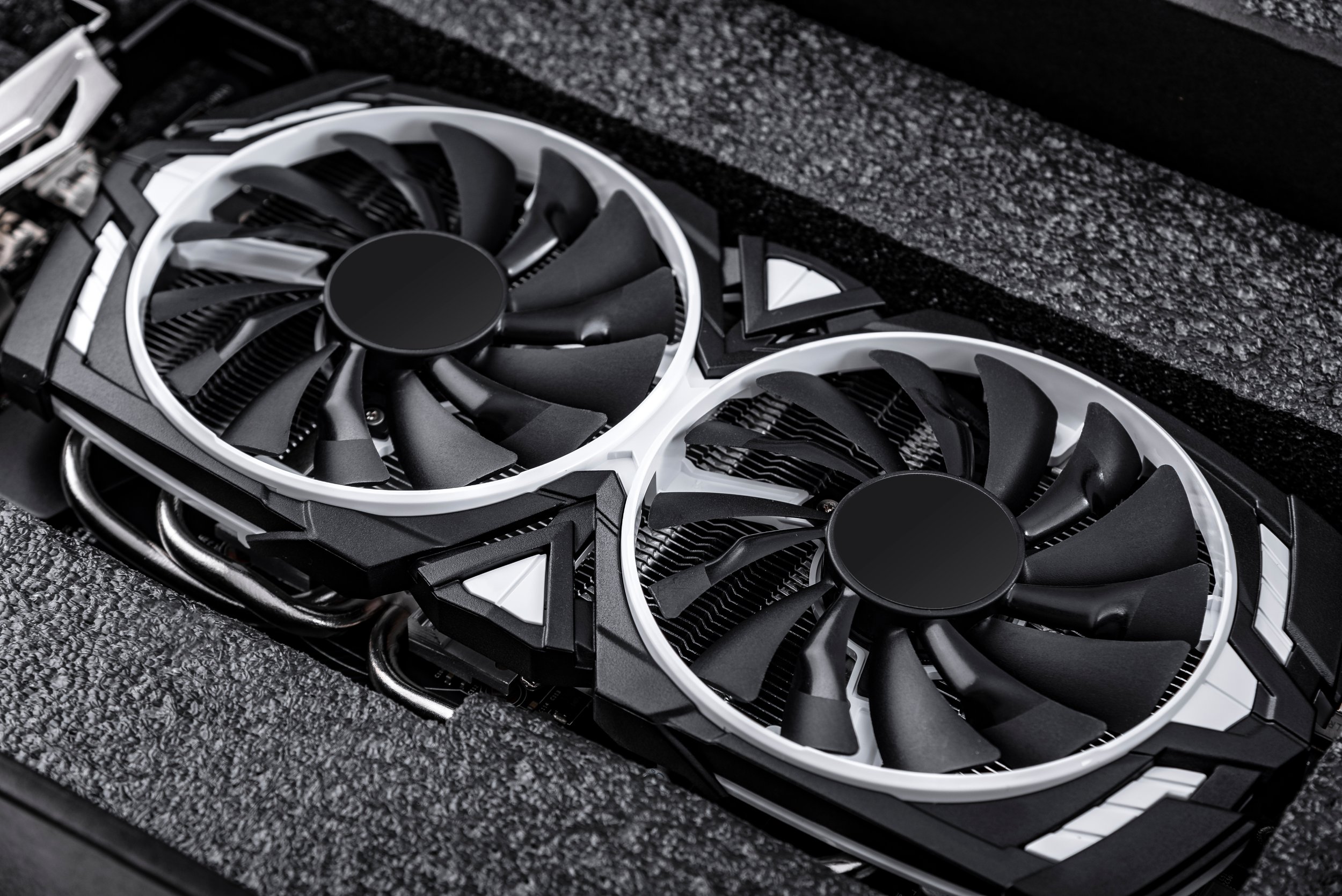GTX vs RTX: What's the Difference Between Nvidia's Cards?
Through decades of advancements in video games, we’ve seen huge improvements in gaming system capabilities. Speed and size have come a long way – but no factor has seen more of an evolution than graphics.
From games that barely used a few pixels to games with hyper-realistic visuals, the progression is rather staggering.
While the differences between old and new games are obvious and dramatic, it may seem as though video game graphics have peaked. Graphics improvements today can be much more subtle between systems and games, but there are still some hardware and game features that take things to the next level.
When it comes to graphics improvements, no company is bigger than Nvidia. While nearly every gamer has heard of Nvidia, you may not know the nuanced differences between their cards, or even their two major options: GTX and RTX.
Today, WTFast is talking you through everything you need to know about these top-of-the-line graphics cards. We’re breaking down the differences and helping you decide which may be best for you.
We’re also going to cover other ways to improve your gaming performance that may not break the bank as much as a new GPU!
Let’s get started.
Background: Nvidia GPUs Through the Years
Nvidia has been the dominant force in graphics cards for some time now, although AMD has become a serious competitor in the last few years.
Nvidia’s success hasn’t been without reason. A plethora of powerful graphics cards has come through their doors, with the RTX 30 series being the latest and greatest However, while each new model does improve on the previous model’s capabilities, that doesn’t mean everyone needs to upgrade — in fact, most don’t.
Like Fifa or Call of Duty games, the differences between each installment of Nvidia’s GPUs can sometimes blur. Unless you’re really into the hard numbers and benchmark testing, you may not notice a difference at all.
Understanding GTX vs. RTX
Nvidia makes its graphics cards in two main families: the GTX (Giga Texel Tracer Extreme) and the RTX (Ray Tracing Texel Extreme).
The GTX cards are the earlier of the two, but they still hold their own in many cases today. You can find GTX cards in both the 10 and 16 series, but the 10 series is somewhat outdated.
The biggest advancement of all advancements in Nvidia’s GPUs came when the RTX was introduced along with its big selling points: Ray tracing and DLSS 2.0.
Ray tracing allowed gamers to experience cinema-quality lighting in their video games, while DLSS 2.0 upscaled graphics by combining 4k display with a top-notch framerate.
This was a big step in graphics, but it still didn’t convince every gamer to move on from their trusty GTX, as GPUs are always a fairly pricey investment.
Over the last few years, newer and much more powerful RTX cards have been released. You can find RTX GPUs in both the 20 and 30 series, with the RTX 3090 being the latest.
With each model, the GPU includes more Nvidia CUDA cores and greater memory size, with the RTX 3090 doubling the 3080 its memory at 24 GB compared to 12 GB.
In short: The newer the GPU, the more powerful it is. The big question isn’t whether the RTX is better than the GTX – objectively, it is superior. Rather, gamers are asking whether the differences are actually worth the significant price difference.
Unfortunately, with the current state of the GPU shortage, the answer isn’t simple. Upgrading can be costly and difficult, with cards often marked up (especially the newest cards) and rarely in stock.
Let’s compare a little deeper to understand if an upgrade is right for you.
Which Graphics Card Is Best for You?
It’s an objective fact that the newest Nvidia graphics cards are more powerful than older models. If you want to max out your capabilities, go with the newest GPU.
Ultimately, your decision boils down to your budget and your needs. How much are you willing to invest, and how important are the highest quality graphics?
If you had the option to choose between a free RTX card and a free GTX card, there is never any reason not to take the RTX. Unfortunately, the price differences can often be quite staggering.
Why Choose the RTX?
If enjoying absolute top-of-the-line graphics is important to you, RTX should be your top consideration.
The RTX is the best way to game with ray tracing, to game at 4k resolution with 60 FPS or greater, and to take advantage of DLSS 2.0 — another big boost to your frame rate.
If you’re playing games where these capabilities aren’t important (or even applicable at all), consider the GTX instead. Be sure to check out your favorite games to see if they’re compatible with ray tracing.
As more and more games add support for the newest visual technologies, RTX cards become more appealing. The gradually more acceptable prices of 4k monitors also aid RTX’s argument.
Why Choose the GTX?
For general gaming purposes, GTX cards are sufficient for most (and often exceptional).
This is especially true if you’re into the most competitive kinds of real-time gaming, where you often won’t want to run ultra graphics settings to completely max out other aspects of your computer’s performance.
GTX cards may not have the fancy new capabilities of the RTX, but they do the core job of a graphics card well enough for most gamers.
The GTX 16 series should be your go-to if you opt for this older model, as it does share the same Turing architecture as the RTX 20 series, just without the bells and whistles.
The 10 series is still an acceptable card if you’re on a serious budget, but it’s gradually becoming obsolete.
Non-Nvidia Alternatives
Nvidia may be the biggest GPU producer in the world, but competitors do offer some alternatives worth considering.
AMD is the biggest name on this list, so if you’re struggling to choose between a GTX and RTX (especially if budget is a concern), take a look at AMD’s options, as well.
Do You Actually Need a New Graphics Card?
Unfortunately, whether you want an RTX or GTX, the GPU shortage plaguing the market makes this a tough time to buy a graphics card.
Not only are GPUs simply out of stock most of the time, but when they are available, it’s often for a price far above where it should be.
With this context in mind, it’s helpful to stay aware of all your options in terms of improving your gaming experience.
Other Ways To Optimize and Improve Your Gaming
Of course, only a more powerful graphics card can directly improve your graphics capabilities, but it’s possible that other factors could be causing your computer to struggle while running high graphics games.
If you’re noticing lag in your computer gaming, try some of those troubleshooting tips.
Hardware Upgrades
Thankfully, there isn’t a shortage of most computer components outside of GPUs. Now’s not a bad time to ensure that you have plenty of RAM and CPU and that your cooling is up to speed.
You can also check for graphics drivers updates. Sometimes you simply need to download and install the latest driver – no need to actually update your physical card.
It’s also possible that your computer is trying to do too many things at once. This may sound simple, but it’s easy to forget how many Chrome tabs you left open or that the highlight footage from your last match is still processing.
To minimize lag, close out any background activity that’s using a lot of processing power while you game. In general, you’ll want to have as few programs open as possible.
Network Lag
In online gaming, lag can come from many sources. Even if you have the latest graphics cards — whether GTX or RTX — your network connection could still fail you. That’s where WTFast’s GPN comes in.
Our Gamer’s Private Network is an advanced network solution specifically and exclusively geared towards the fastest and most stable online gaming possible.
How does it work? You simply install the client, choose your favorite game, and start playing! Our AI finds the fastest traceroute for your gameplay data (and only that data), then sends it down a private path to the server.
Think of it as the autobahn of the internet, while your normal connection is more like a busy highway in a big city during the 5 o’clock rush hour.
If lag is one of the reasons you’re considering a GPU upgrade and you play online, try switching to our GPN today to see what the secret weapon of gaming can do for you!
Conclusion
GTX, RTX, or AMD – there are tons of great GPU options out there, each with its own strengths depending on your budget.
If the GPU shortage has you opting to wait for your upgrade, there are plenty of other solutions ready today to reduce your lag and better your gaming, like our WTFast GPN. What are you waiting for? Time to get gaming.
Sources:
What Is Ray Tracing? | Fossbytes
A chronological history of the catastrophic GPU shortage | Spider GL


